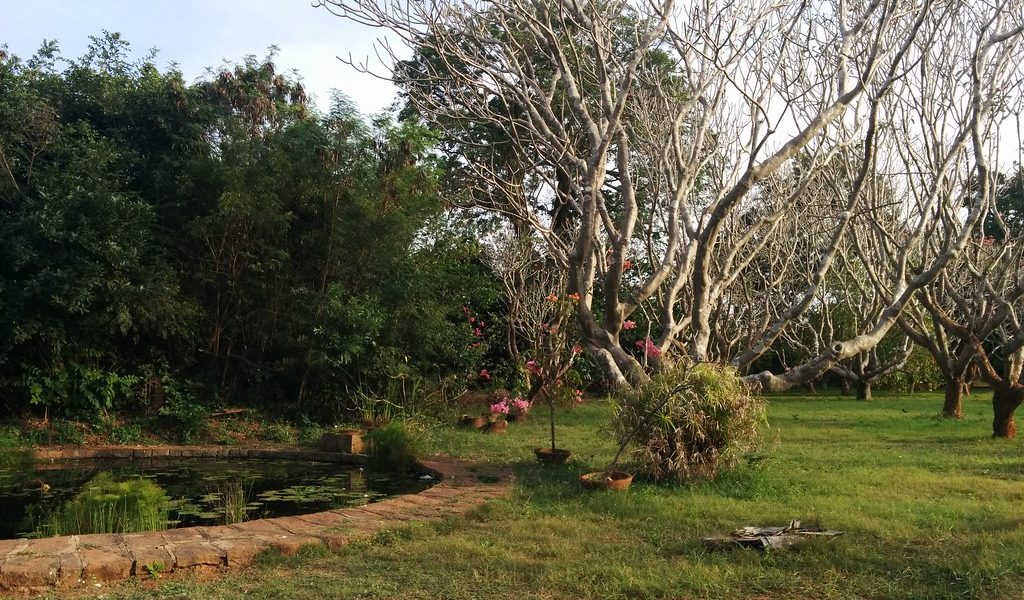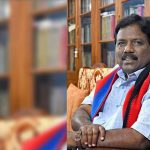
Drawing a thick boundary between “them” and “us” will only result in further division and a receding collaboration between those in Auroville and those around.
By Muriel Ghion | 29/DEC/2021
As many of us know, the Mother approved the Galaxy Plan in 1968. After the establishment of the Auroville Foundation Act, whose sole purpose is to manifest the ideals of Auroville as given by the Mother, including the Auroville township, the Auroville Master Plan was formulated by the Residents Assembly in 1999.
The Residents Assembly approved the submission of the Master Plan formulated by it to the Governing Board of the Auroville Foundation in December 1999. The Governing Board and the Ministry of Human Resource Development, Government of India) subsequently approved the Auroville Master Plan with inputs received from the Town and Country Planning Organisation (Ministry of Urban Development, GoI) in April 2001 and notified the plan in the Gazette of India in August 2010.
The residents of Auroville have been left to manage most Auroville affairs and organisation since the inception of Auroville. This continued after the Auroville Foundation came into being. While there are many laudable achievements within Auroville in the last years, growth and development have been slow, and residents/the Residents Assembly have not managed to continue with the development of the city in a coherent manner. The main reason for this has been identified as confusion within the community as to its role and purpose coupled with a strong sense by the current residents that they are the deciding authorities on all matters related to the development of Auroville.
There are two narratives used to keep development stalled. One, a “concern for the environment” that is, in truth, very selective as is demonstrated by the instance where a densely forested area was razed down overnight for a “horse riding field” by some of the same protesting today. Two, a concern on “community process”, the emphasis on which is actually designed to never culminate, as any group of 60 residents can stop any agreement previously made by the Residents Assembly, over and over again. We see the example of today when a previously agreed and formulated Master Plan is being contested because a group of residents disagree.
With regards to the Auroville Master Plan, both of these concerns have been repeatedly addressed. In its planning, Auroville will be a unique city in the world with a dedicated green belt, composed of forests and farms, that is three times the size of its city area, and with 50% green corridors and parks within the city area itself. The Rights-of-Way within the Master Plan (the Crown, the Radials and the Outer Ring Road) constitute only 1.64% of the total master plan area, with the Crown itself occupying only 0.38% of it. This is remarkably low compared to other planned cities where roads and infrastructure rights-of-way take up a minimum of 10% of the city area. No forests or water catchment areas will be “destroyed” by the manifestation of the Crown, occupying in its entirety a tiny fraction of the entire Master Plan area.
As far as the community process is concerned, Residents Assembly, in its role as a consultative body, gave its unanimous agreement in 1999 to the Master Plan. Subsequently, however, some residents over the years began to plant trees and build structures directly on the rights-of-way (areas which were meant to be clear) without approval from the Auroville Town Development Council, with the understanding that when the right-of-ways were to be implemented, these trees will have to be transplanted or cut, and structures removed. However, as time passed, and development was slow, the land stewards of these areas began to feel more at ease with the actuality and began to oppose the right-of-ways implementation as per the Master Plan, demanding a say in the details of planning and implementation and a re-design of the Master Plan roads themselves. This is not only extremely unsustainable, owing to an increased capital cost and mobility energy due to deviations, but also would set a very bad precedent. In other words, if one violates land use regulation and plants trees, digs dams and builds in the wrong place, the entire Master Plan of the city cannot be put into question to accommodate such violations.
It is important to note that the Aurovilians are only the ‘stewards’ of the land. They are not the owners. The land belongs to ‘humanity as a whole’ as stated in the Auroville Charter by the founder, The Mother. It is also important to note that the Residents Assembly has completed its role of formulating the Master Plan, and now the responsibility of implementation is vested in the Governing Board, as per the Auroville Foundation Act.
The Auroville Master Plan has been the basis upon which donors have generously made contributions while the Government of India has provided development grants to see Auroville’s physical completion. Projects of some of the Auroville resident architects, who now oppose the clearing work, have conveniently been recipients of these donations and grants. They have designed and implemented building projects along the Crown and other right-of-ways. At those times, they have not put the Master Plan or the rights-of-way into question.
The newly appointed Auroville Foundation secretary Jayanti Ravi has spent the last six months investigating the reasons for this stalled development despite a clearly approved and gazetted Master Plan, and also other irregularities and stagnation in other areas of Auroville’s development. She has also spent considerable time interacting with residents, meeting with groups holding various viewpoints, and holding consultative processes with experts in an effort to call for collaboration from the community members.
The new Governing Board with its chairman R.N. Ravi, in its first meeting in Auroville on November 2, also spent considerable time meeting the residents, meeting those with opposing viewpoints on city development, meeting the working groups, in order to understand the blocks, and noted the following:
“…Culture of “stakeholders” seems to have replaced the culture of “voluntary contributors” / “willing servitors.”
“…Build the township infrastructure backbone (water, electricity, communication, sewerage, etc.) along the fully cleared RoWs to enable planned urban development.
“…All Master Plan deviations on the land earmarked for the Crown have to be cleared so that the circular Crown Road and related infrastructure can be built without further delay. A similar exercise shall be implemented for the twelve radials and the outer ring road, where land ownership permits.”
After the Governing Board’s visit, the Crown clearing was scheduled to begin. It began in an area called Bliss, next to the Youth Center, on December 4, 2021, at 7 am, where two JCBs (earthmovers) with a small work team, and Auroville Town Development Council were present. As soon as the work began, about 50 young and senior Aurovilians showed up on site and violently and physically blocked the JCBs, some shouting and spitting, putting their children on the machines, insulting and shoving people who were there to support the work team. Shortly afterward a few police personnel were called on site to calm the situation. The police present held remarkable poise and did not engage in violence.
To complete the scheduled work that had been blocked, the work commenced again the same night, with police protection, after cordoning off the area with a few police constables. It was decided to work at night in the hope that less Aurovilians will show up to block the work and to thrust their small children on the equipment, creating a dangerous situation. There were no “houses” in the path of the work scheduled for that night. However, some residents did slip through the cordon, insulting and shouting at the police personnel, and physically blocked the work. The police maintained admirable calm and composure, showed no form of violence or aggression as alleged by some, but simply restrained the obstructing residents from doing so.
The next day, December 5, the youth of the Youth Center met with the secretary. The secretary offered that they could do the dismantling of structures in the way of the Crown themselves, the following day, so that the clearing work could restart. Alternatively, the clearing work would start on the 8th of December with the necessary clearing equipment and tools. The youth agreed to dismantle the temporary structures themselves and sent out a message to the community with this agreement and invited the community at 6 am the next day to help with the dismantling work.
However, the next day when dismantling work should have started as agreed, some Auroville residents turned up and dissuaded the youth and others from dismantling the structures. This breach of agreement compelled the next phase of clearing work.
Two days later, on December 9, four JCBs assembled on site at the Youth Center, with about 100 volunteers from the bioregion, some Auroville residents and a work team. The bioregion volunteer youth did a remarkable job of forming a human cordon by linking hands around the JCBs to allow them to clear the access, demolish the temporary structures along the way and remove the trees. A few from the Youth Center broke through the cordon and jumped on the JCB, and were firmly moved aside by the volunteer group. Anyone who stepped in the way of the JCB, or thrust their children, or climbed on it to disturb the driver were firmly and skillfully removed from the place and the human chain re-established. Thus the work continued and within half a day, the entire Crown stretch in the Youth Center area was clear, after a painful and expensive wait of more than three years.
Much has been said about these bioregion youth, whose remarkable adherence to their work with composure is laudable. They have been called “hired thugs”, drunks and much more. It is very important to understand that Auroville has not been thus far developed without the help and physical labour of the people from the bioregion. Matrimandir and other building projects in Auroville could not have been built without the use of “outside forces”. We must also never forget that the people from the bioregion gave their land to the project of Auroville very early on for Mother’s vision; they are baffled that after 53 years, 3,200 people are holding 3,500 acres hostage, and are very much interested to participate in unblocking its development – for a growth in the development of Auroville means a growth also for the bioregion. Drawing a thick boundary between “them” and “us” will only result in further division and a receding collaboration between those in Auroville and those around. It is also imperative to recall that Aurovilians are not owners of the Auroville project, as some residents seem to strongly believe.
Shortly after this, the Auroville Foundation received a stay order from the NGT. The matter is sub-judice.
What is perhaps less visible and less publicised is the aggressive landholder-like behaviour of the Aurovilians. Even less visible perhaps is their true motive which hides behind the two narratives of “ecology” and “community process”.
In truth, Auroville has been left to its volition for 53 years, and it has resulted in a strong sense of entitlement, a sense of ownership of the project, and a sense of being above the Indian law in some of the Aurovilians. Instead of gratitude for the last 53 years where the residents have been given a great independence and generous funding to manifest the city despite showing poor results, people now have taken this freedom for granted, and do not speak of the great responsibility that came with this freedom. These residents also miss the point that there continues to be a great scope for collaboration, if we stop seeing things as “inside” and “outside”, “us” and “them”. There is no “us” without “them”. Taking responsibility for failed actions, and moving towards real collaboration is the need of the hour.
Nothing in the recent events in Auroville has come out of the blue; decades of stalling has resulted in the present situation and the latest renegations of agreements by the Youth Center and the protestors supporting the Darkali stewards, in the name of environment, are examples of further attempts at stalling development. It is imperative that Auroville residents allow the experts already engaged in the city development to do the needful and stop blocking advancement for personal preferences and interests.
The majority of Auroville residents rejoice with gratitude at the interest and leadership with which India is taking part in the further manifestation of Auroville, the city the earth needs.
Muriel Ghion is a resident of Auroville.



